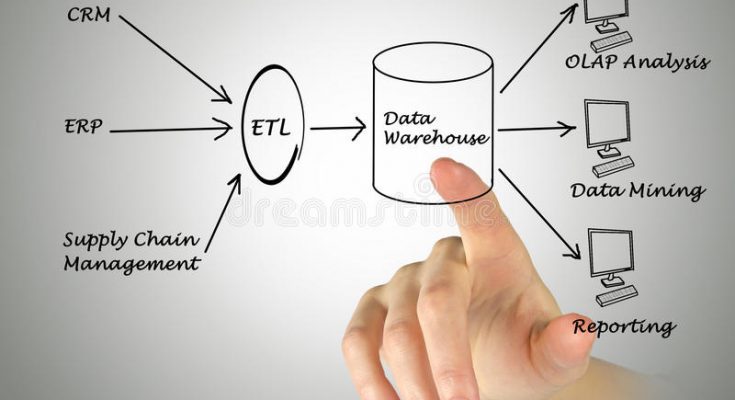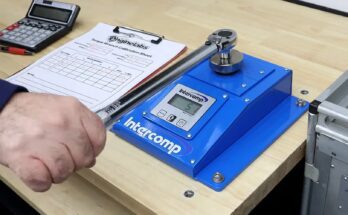Even though the high-value data is now available, still organizations don’t use about 43% of their accessible data properly. Even more, they only use 57% of the data they normally collect. Without having a way to extract all different types of data, and unorganized or poorly structured data is keeping organizations from reaching the full potential of available information. Ultimately, making the right decisions becomes harder.
Introduction to data extraction
It is a process of procuring data from a source to move it in a new context either cloud-based, on-site or a hybrid solution. Multiple strategies are commonly applied for data extraction but the process is complex more often. It is the first step in the ELT extraction process, transformation, and loading. It means data always goes under further processing after completion of initial retrieval.
How to extract structured and unstructured data?
There are different reasons to perform data extraction. These include:
- To prepare data for further analysis
- To use it within a new context.
- To achieve data for long-term secure storage
Structured data extraction
Data formatted to a certain standardized model to make it ready for further analysis is called structured data. You can use logical data extraction to extract structured data.
The process of structured data extraction breaks down into two following categories:
- Full extraction is a data retrieval strategy in one trip from any given source. This data extraction option can be performed without using any supplements. Overall, it is an uncomplicated data extraction option to consider.
- Incremental data extraction is a complex logical process because it isn’t limited to the starting interval only. Instead, recurring visits are essential to monitor and access any changed data from the source. In this data extraction technique, you have to identify recent changes in data without repeating full data extraction.
Unstructured data extraction
Arguably, unstructured data extraction is a complex process. It is because the types of data lying under this group are commonly highly varied. Some data source examples for this category include spool files, text documents, web pages, emails, etc.
However, it is always important to remember that information from these sources is also highly valuable. Therefore, the capacity to process and extract unstructured data is as important as structured data. However, to make this data ready for analysis, you require more processes beyond extraction.
Data extraction vs. data mining: What do you need to know?
Data extraction aka web scraping is a process of taking data from one given source to another context. However, data mining is a data discovery process from databases.
While extraction is simply the movement of data, however, mining actually entails qualitative analysis of data. Mining can let you survey data methodically to find overseen patterns, insights, and relationships, or fraudulent activity as well.
Another key difference is that data mining requires data to be structured and clean-up while extraction can be performed on any data type.
Key challenges of data extraction
Here we have enlisted some of the most common business challenges when it comes to data extraction:
- Even though you can use data extraction tools to perform most of the tasks, still it is important to monitor data regularly.
- Another important challenge is to view hundreds of customers at their individual levels. However, choosing an AI-powered solution ScrapingRobot can help you to overcome this challenge effectively. It is because this way you can undertake to set a clear path for data extraction easily.
- Last but not the least, security of your sensitive data is an important aspect of dealing with data extraction. You must consider either removal of sensitive information before extraction or encryption to move that securely.
Top tools for data extraction
There are various tools of data extraction that you can consider to bring ease to the process. These tools include:
Scrapestorm
This is an AI-powered data extraction tool that ensures simple visual operation. It is compatible with different operating systems including Linux, Mac, and Windows. It can recognize different data entities automatically. While the flowchart mode of the tool can bring more ease when you need to develop complex scraping rules.
Altair Monarch
This is a self-service tool that requires no coding. You can connect it to different data sources easily. It comes up with above 80 built-in functions to cleanse and process data at a higher speed and with no errors. So, you don’t have to waste a lot of time in making your data readable.
Klippa
This tool can provide cloud-based data processing services for contracts, passports, invoices, etc. The conversion speed for most of the documents is about 5 seconds only with this tool. You can also complete the processes of data classification and manipulation around the clock online.
NodeXL
Here is another open-source, free, add-on extension for MS Excel. The tool specializes in analyses of social networks. However, it doesn’t offer a data integration feature. However, this can offer you additional features like advanced network metrics, sentimental analysis, report generation.
Best ways to use data extraction technique on qualitative data
The nature of qualitative data extraction has a risk of posing different obstacles to procure accurate samples. So, it is important to have minimal skills in data manipulation and coding. Data’s manual tagging is possible but this is a labor-intensive procedure. Even more, it can also lead to lower accuracy when working without larger datasets. Due to which small to mid-sized businesses will have a tough time accessing and extracting adequate data.
It is because small datasets analysis can lead to outliers, overfitting, and high dimensionality. So, it is always better to invest in the right tool, otherwise extracting data can lead to inaccurate interpretations.
Final Thoughts
Effective data analysis is key to business intelligence optimization. To make it happen, automatic data processing is an excellent solution. However, data extraction is just an initial stage of data analysis. However, you must couple this technique with modification, classification, and sophisticated analysis as well. Fortunately, you can achieve all this by choosing the right AI-powered solution. This will not only help you to improve your efficiency but also keep you from performing repetitive tasks.



